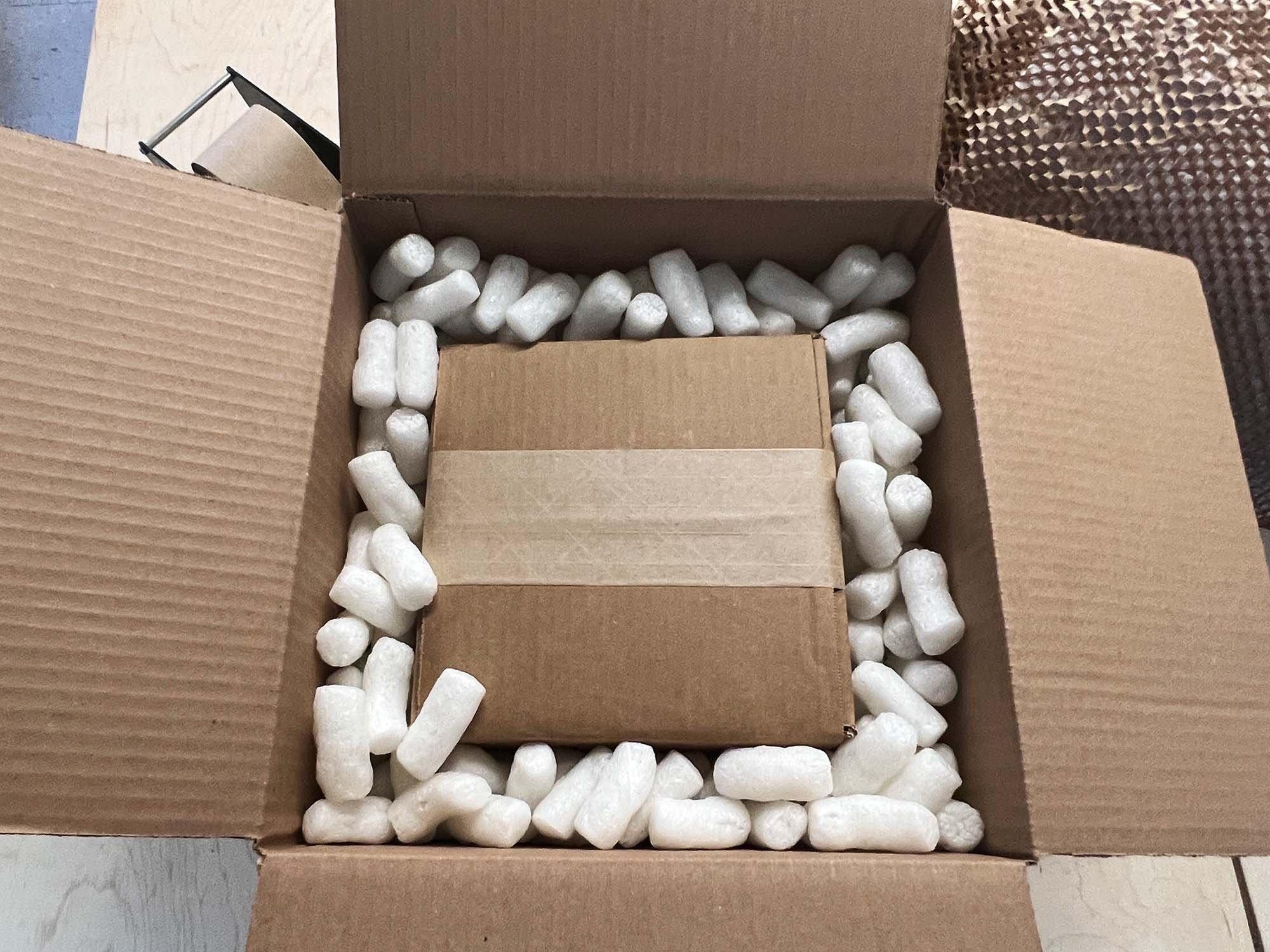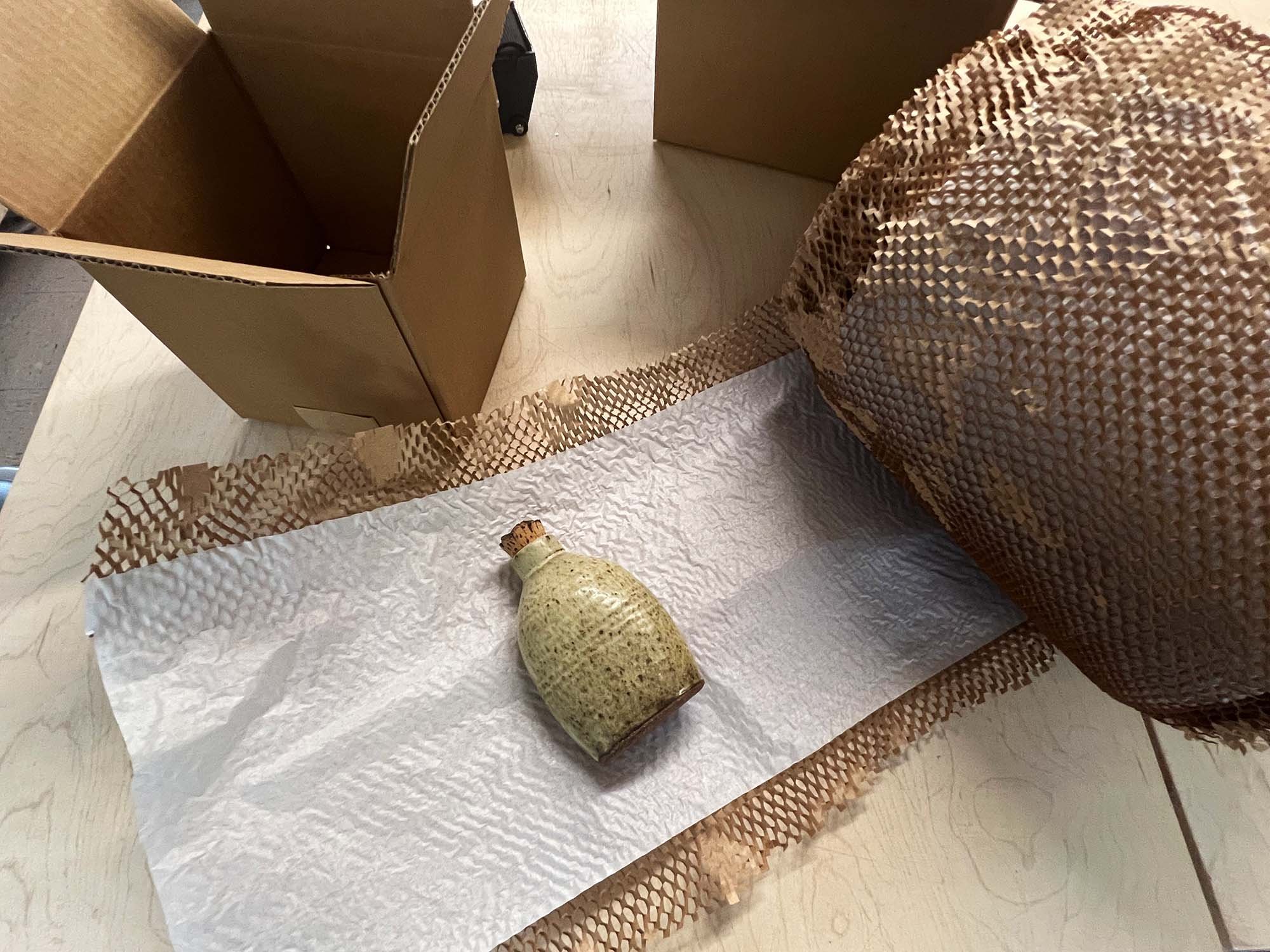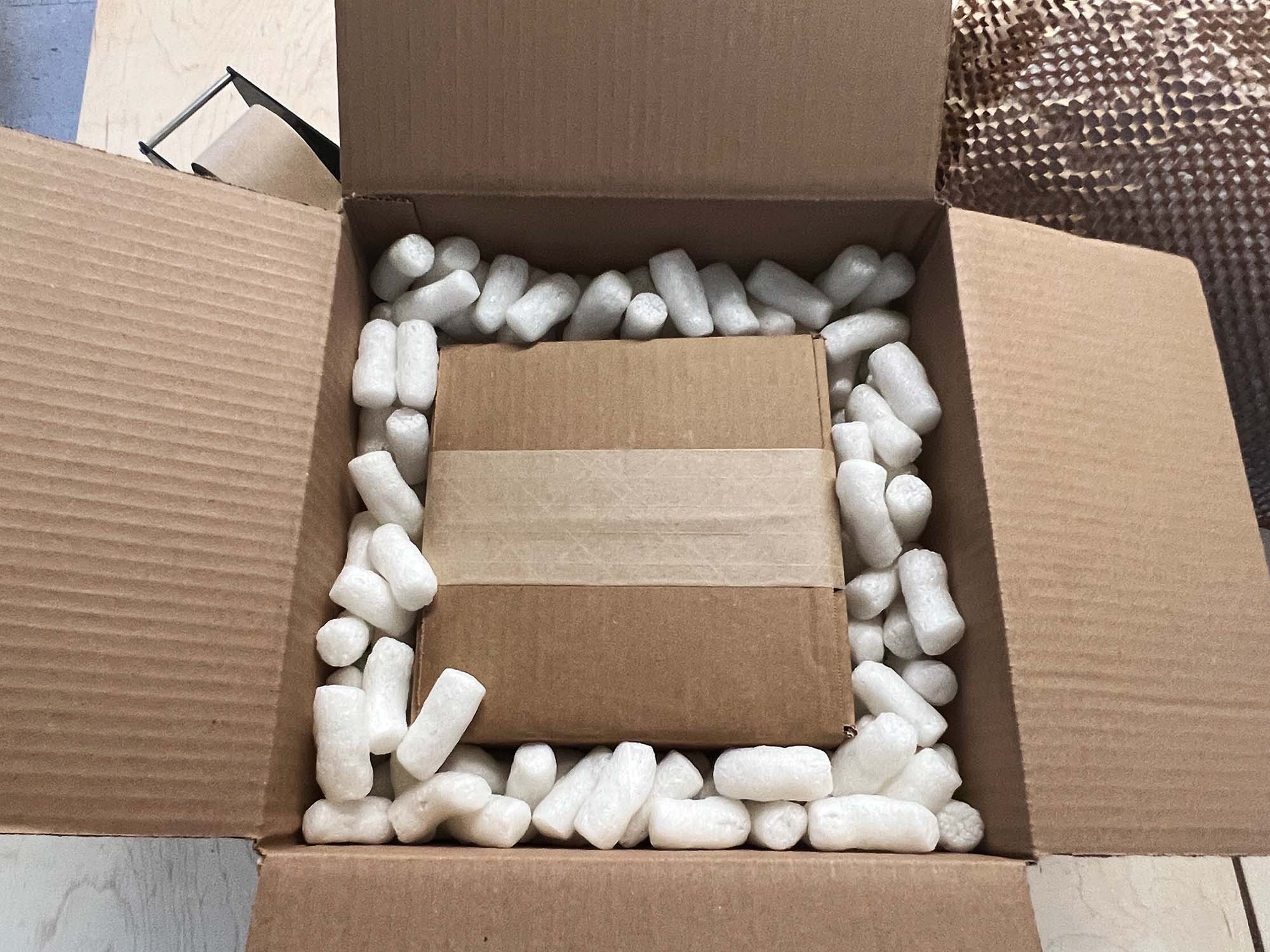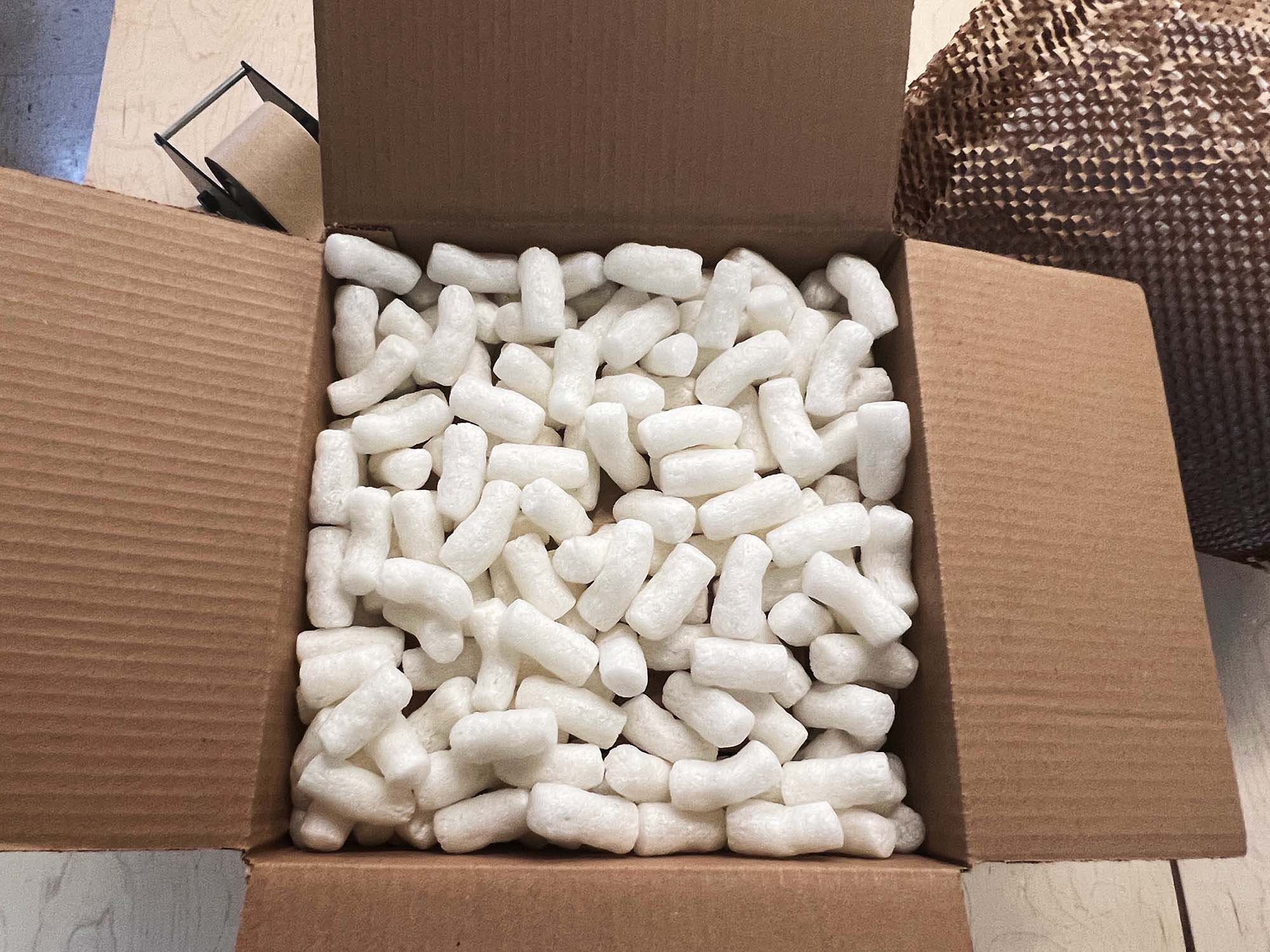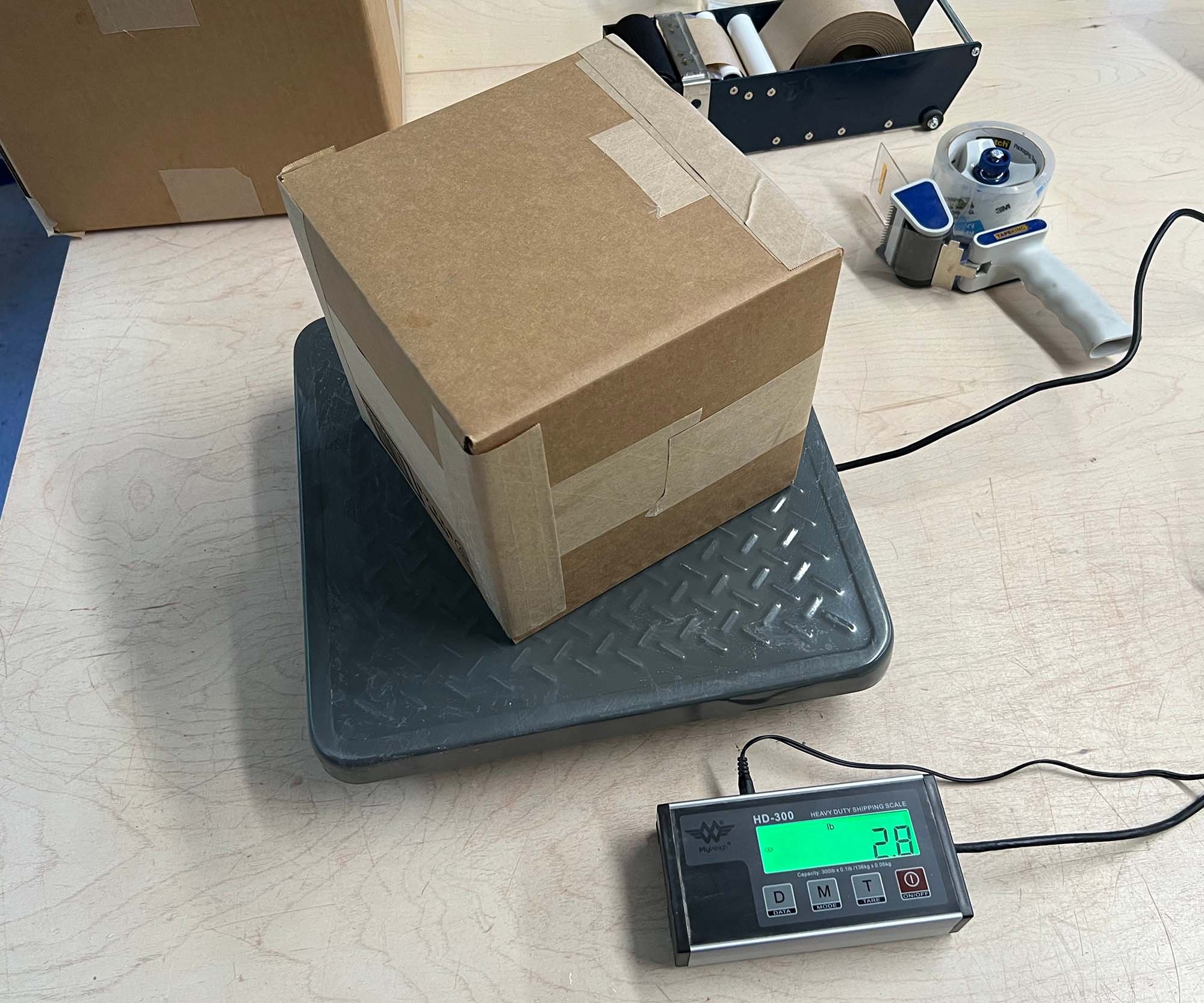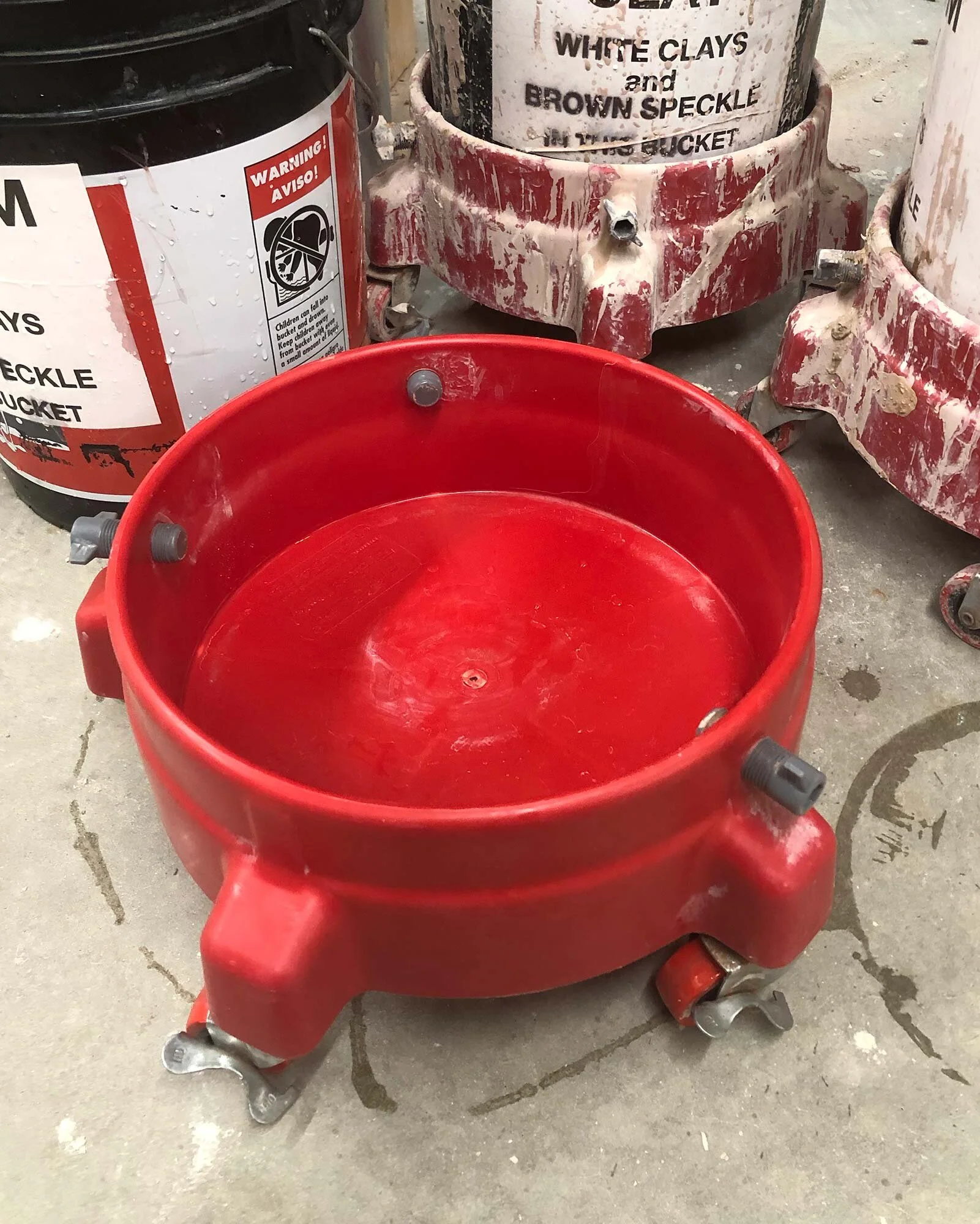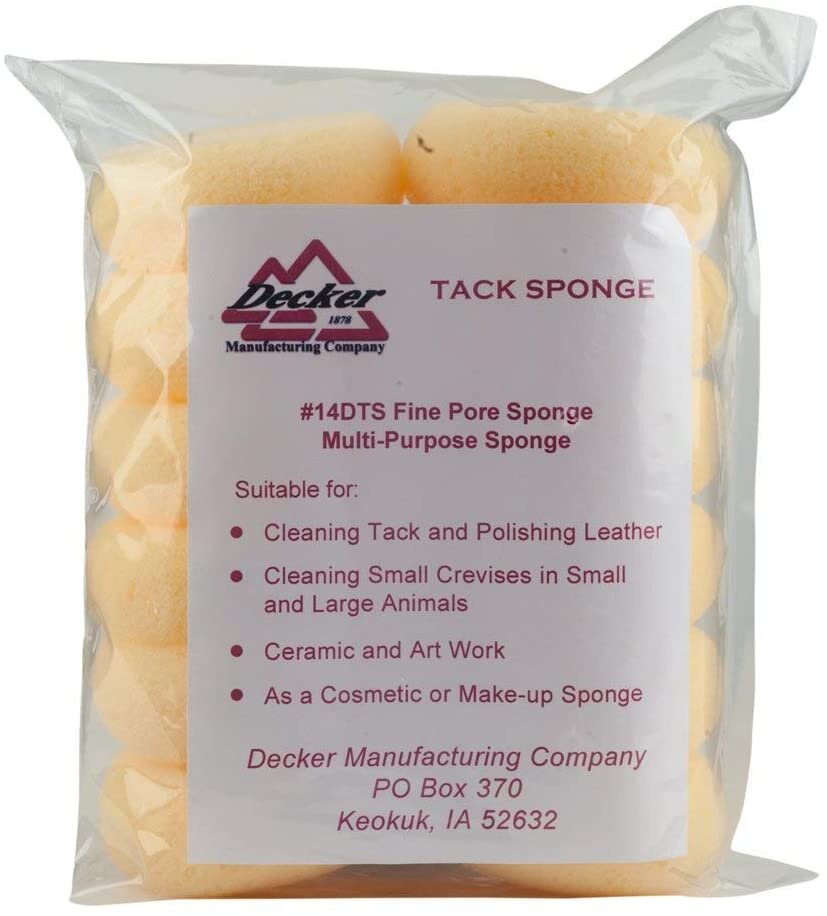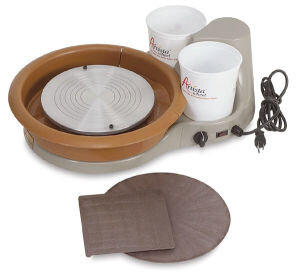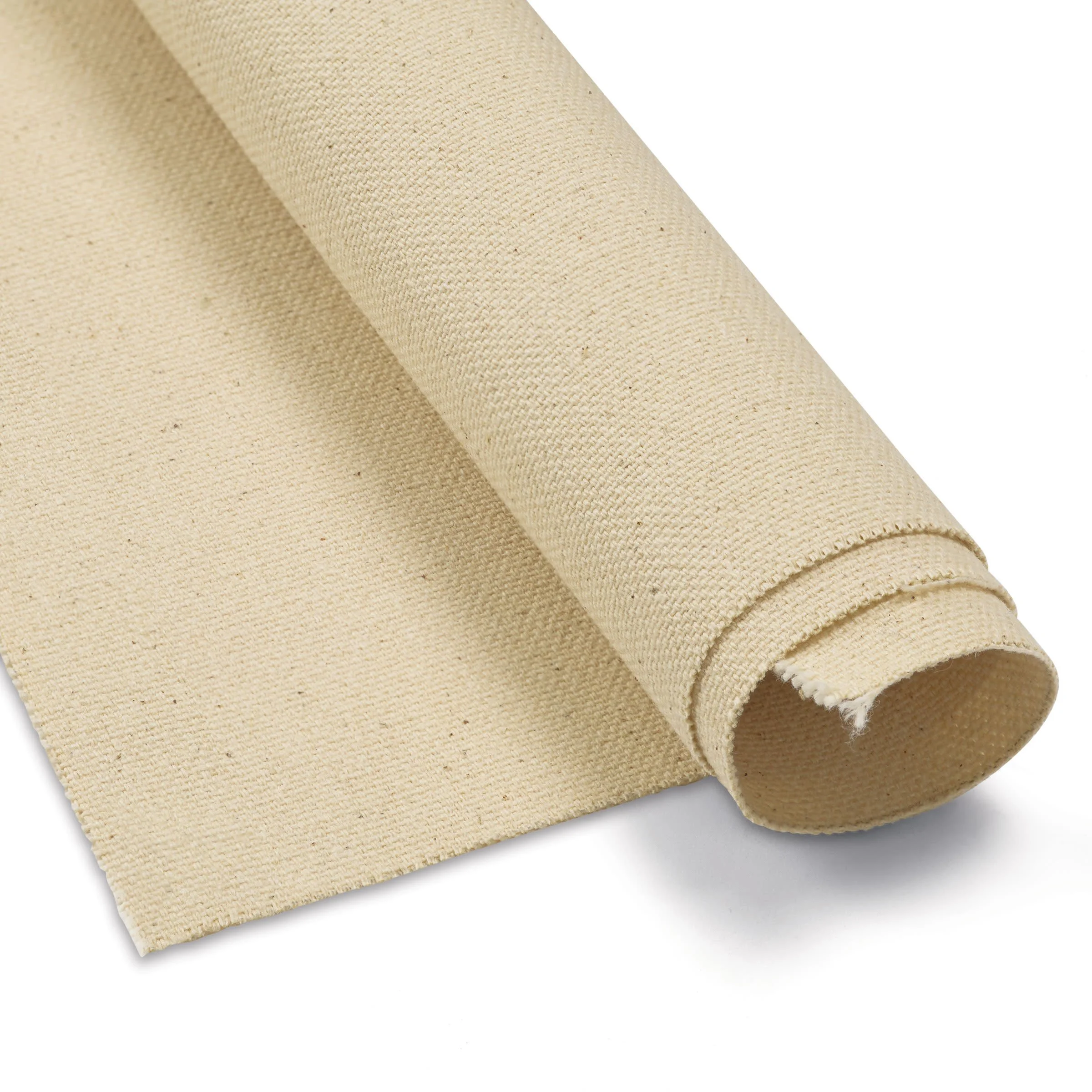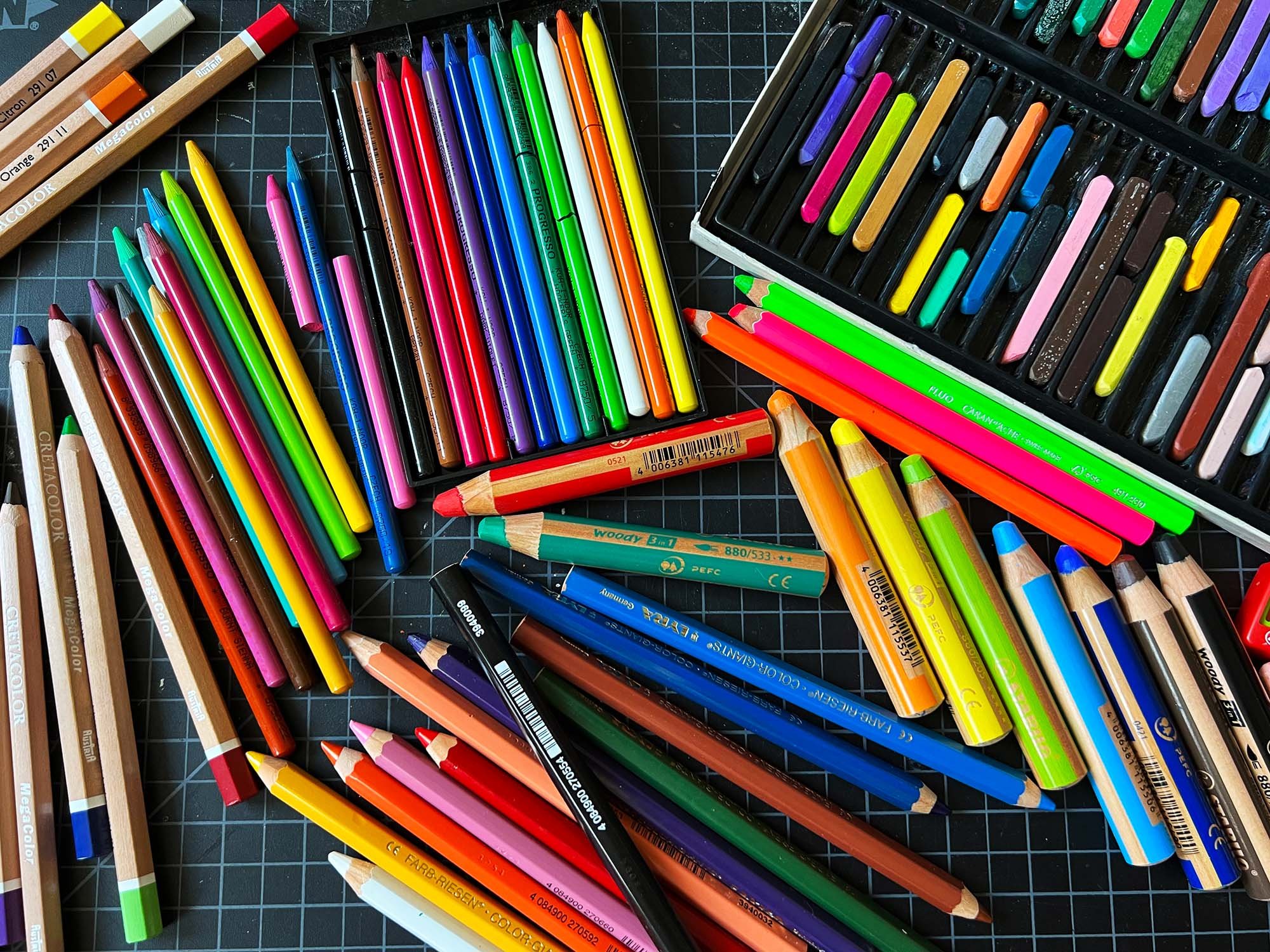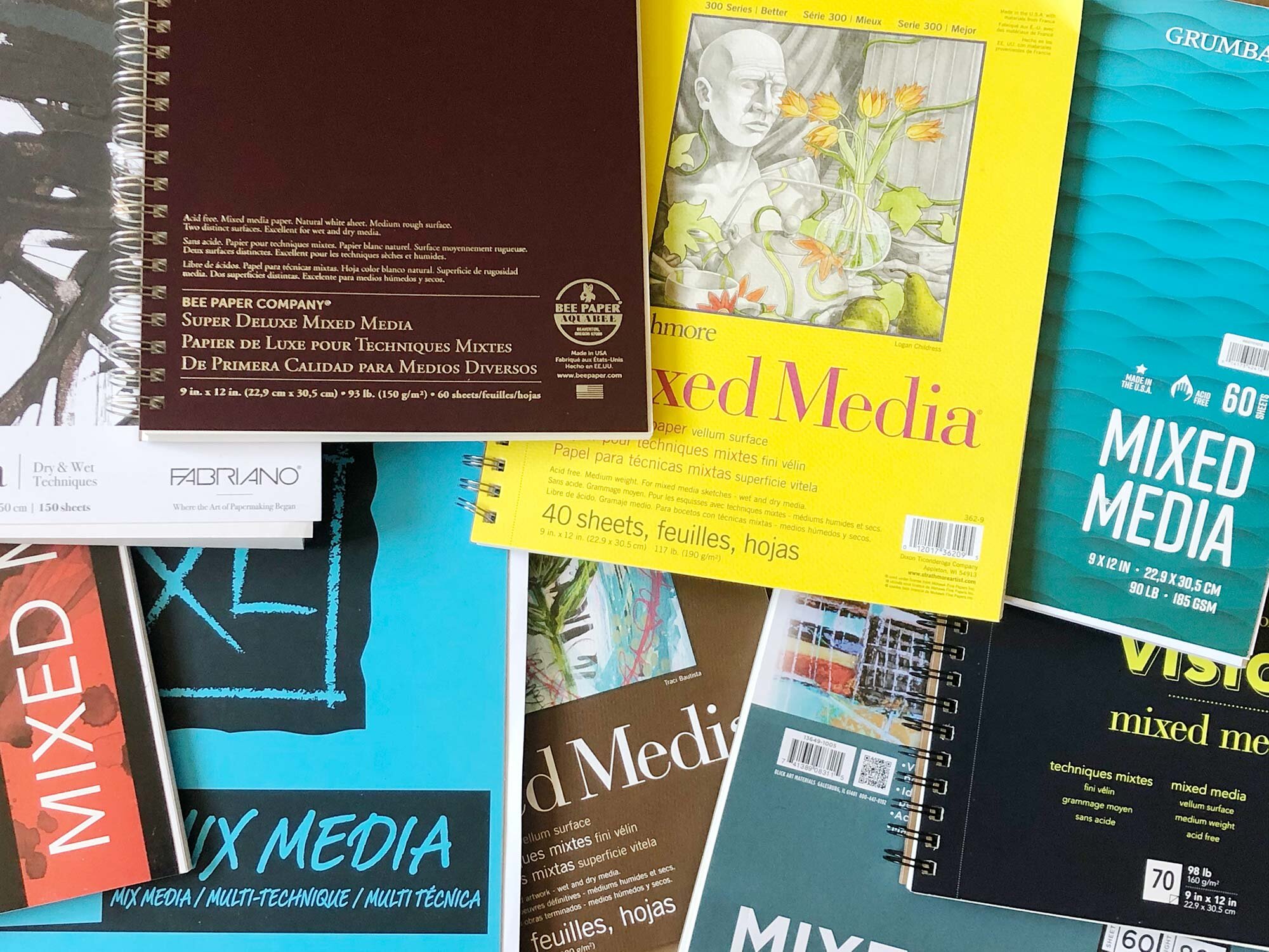Shipping ceramics or any fragile object can be a daunting task. But with this guide, you should get all information you need to become a shipping expert.
This post includes
Guide to packing and shipping fragile objects using the “double box method.”
Recommendations on tape, boxes, wrapping materials, and void fill.
Guide to shipping scales
Review of thermal packing label printers
Let’s dive in to packing and shipping first.
How to Pack and Ship Ceramics, Sculptures, or other Fragile Objects
This is the best method to pack your ceramics and other fragile objects to insure that nothing is broken or damaged during shipping. The method uses two nested shipping boxes.
Start by wrapping your object with Ranpak Ready Roll (shop at Amazon), bubble wrap, or tissue paper. Then pack the wrapped object into a box with packing peanuts or foam, so that it is surrounded by about 2 inches of packing material on all sides. Give the box a light shake to insure it’s tightly packed and nothing movs. Then, place this box inside a box that gives another 2 inches of packing room on all sides and once again, make sure it is packed tight enough so that nothing moves.
This method results in around 4 inches of packing material surrounding the object in each direction, giving you plenty of assurance that you can ship via the postal service, FedEx, UPS, DHL etc, and your sculpture or pottery will be fine.
Here’s a detailed how to of this method with pictures.
Step 1: Select boxes that will nest
After always having random boxes around, I’ve found it useful to stock boxes I know will nest. In this example, I’m going to use an 8x8x8 inch box that will pack into a 12x12x12 inch box, giving equal space on all sides.
After taping the bottom, you can always double check to make sure the boxes will nest.
Step 2: Wrap Object
A stoneware flask ready to be wrapped in Ranpak packing material.
In this example, Ranpak is used for the initial wrap. It’s perfect for ceramics, and can be reused or recycled easily.
I usually avoid tape if possible, so it’s easier to reuse the packing material, and another bonus with Ranpak is it will sort of “grip” the opposite side and stay wrapped on it’s own.
Step 3: Packed Wrapped Object in First Box
The Ranpack-wrapped ceramic nested inside packing peanuts, inside the smaller box.
Next, put some packing material on the bottom of the first box, put your wrapped object in, and fill until it’s full and nothing moves when you close and shake the box. If it all seems good, tape it shut.
Step 4: Pack first box inside larger box.
About 2 inches of packing peanuts at the bottom.
Start with about 2 inches of packing peanuts at the bottom of the larger box, place your sealed first box inside, and then fill with more packing materials. You may need to push some material down the sides, to make sure you pack everything tightly.
Place packed smaller box inside.
Fill sides with packing materials.
After making sure sides are well packed, place material on top.
Step 5: Seal and label your box
That’s it! You’ve packed your box. Close it and give it a test shake. If nothing moves, seal the box shut and then you are ready to attach a label.
Guide to tape, boxes, wrapping materials, and void fill
Here’s a few hints on tips on materials for your shipping needs.
Tape
Gummed paper tape in a Paper Mart brand dispenser at top, Scotch Heavy Duty tape in a dispenser at bottom.
For shipping, you have two options: plastic shipping tape and Kraft tape also known as gummed paper tape.
Plastic shipping tape is pretty straight forward and dependable. It’s easiest to use with a quality tape gun or dispenser. The main drawback is that it’s not easy to recycle. Within the plastic tape category, you have packing tape, regular shipping tape, and heavy duty tape. Some of the basic tapes can be pretty thin and weak (and sometimes don’t dispense easily) so for my studio I go with Scotch Heavy Duty shipping tape. I’d rather not fight with the tape. Mostly, I use the clear tape for covering labels.
The Paper Mart Kraft tape dispenser.
Kraft shipping tape or gummed paper tape is a nice option, but it does take some set up for easy use. It’s super strong, looks great, and can be used to patch older boxes. (Unfortunately, Kraft tape with fiberglass reinforcement is not recyclable.) The only drawback is that you have you have to activate the gum with water.
For occasional shipping needs, you can cut the tape with scissors, then apply water with a sponge. This makes a bit of a mess on your table but it works.
If you are shipping more often, a tape dispenser with a water reservoir is very helpful. In my studio, I use the basic Paper Mart Kraft tape dispenser, but there are higher tech models out there. All of them help you dispense, wet, and cut the tape.
For Kraft tape, I’ve tried a few options and the most dependable option was the Duck Brand Fiberglass Reinforced Kraft tape. While this tape is not recyclable, it does seal very well and is easy to work with. (I’m currently looking into other recyclable Kraft tape options and will update this post if I figure anything out.)
Shipping Boxes
When it comes to boxes, there are lots of options for where to buy. Take a look at what you are shipping, and try to stock sizes that work for you. There are plenty of box suppliers online, and there may be a specialty shipping supplier in your area that will deliver without too high of a minimum. Usually, they will have lower prices per box but they will charge shipping. If you are shopping online, a few links are below:
For this double-box shipping method, the standard weight boxes work just fine. But you can also upgrade to the heavy-duty boxes if desired. They have thicker walls and are sturdier.
As mentioned in this post, I used to just have random boxes but when I got more serious about shipping, I started stocking in sizes I knew would nest together. That means, I usually have a variety of boxes ready to go in 8”, 10”, 12”, 14” and 16 inch cubes.
Here are the exact boxes used in this pictures above:
Void Fill / Packing Peanuts
Along with tape and boxes, wrapping material and void fill are important parts of the shipping set up.
As mentioned, I love Ranpak Ready Roll. It’s tissue paper surrounded by honeycomb-cut brown kraft paper. It’s perfect for wrapping ceramics. If you have something more fragile, you may need to get stiffer foam such as museum foam, and create a custom chamber for your piece. But for my needs, I’m happy with the Ready Roll, which I then surround with biodegradable packing peanuts.
Packing peanuts are available in styrofoam or biodegradable corn starch. The corn starch peanuts cost about the same and are just as easy to use and are reusable, as long as they don’t get wet. For packing peanuts, unfortunately there aren’t a lot of great online options. The bags of peanuts are big and bulky, resulting in a high shipping cost (Some retailers, especially online, list the peanuts with shipping included.) For peanuts, it’s best to go with your local shipping supplier. If you bundle your purchase with boxes and tape, it should be quite economical to get a delivery as needed.
For smaller volumes of peanuts, check the links below.
Other Options for Void Fill
Shipping stores stock a variety of void fill, or you can make your own. Here are a few ideas to fill up space in a box:
Crumpled newspaper (although ink can get on things)
Sheets of crumpled kraft paper
Bubble wrap
Ranpak Ready Roll
Clean egg cartons
recycled bubble mailers
Guide to Shipping Scales
Any scale that is accurate can be used as a shipping scale. Typically, shippers are going to round up to the nearest pound, so your scale doesn’t have to be super accurate. But you want it to work.
A package on the MyWeigh HD-300 Shipping Scale.
In my studio, I use a dedicated shipping scale, the MyWeigh HD-300. It’s a beefy scale with a metal plate, a detached readout, and can be used with batteries or plugged in. It also doubles as a robust scale for measuring plaster or other large amounts of materials.
For our complete guide to shipping scales, click here.
For a guide to scales for mixing glazes (may also work for small shipping scales) click here.
The MyWeigh HD-300 Shipping Scale retails for around $130.
The Accutek scale can be used with batteries or plugged in, and can weigh up to 50 lbs.
For a light-duty scale that can be used for weighing small balls of clay, and small packages, the Accutek all-in-one scale is a great budget option that costs just $20. It has a plastic top, decent build quality, and can weigh up to 50 pounds. It will just be hard to read if your package is wide, as it does not have a detachable screen.
Thermal Label Printers
The Rollo printer with a stack of labels ready to print.
The final piece of shipping set up is a thermal label printer. These printers print in black on 4 x 6 inch stickers that can be used for labels or any use. You don’t need a thermal printer if you are planning to take your package to a shipping service, but it’s a must have if you want to prepare your own labels and drop your packages off or have them picked up.
The Rollo printer opened up, with a stack of labels.
The two main competitors for thermal printers appear to be Rollo and Dymo. In my studio, I went with a plug-in Rollo model and I’ve been very happy. The printer itself is well built, easy to use, and connects to my computer via USB. The extra power source plug is a normal size electrical item, but it is external to the printer.
For me, it took a bit of effort to get everything to work on the computer end (I find it best to use the Rollo browser extension to download a PDF of the label, then print) but you may find it easier to print directly from the service that you use.
The Rollo usb-connected printer retails for $200.
The Rollo wireless printer retails for $300.
Both printer work with any brand of thermal labels, but you can get 500 Rollo 4x6” labels for $19. Shop here.
Summary
This post has covered just about everything you need to know to get started with packing and shipping fragile objects, along with the tools and materials required to get the job done.
The “double-box” method is what I use and it has never failed me, and it’s what I recommend to anyone packing and shipping ceramics. Just make sure the piece is packed securely and doesn’t move or shake around, and that it is double-boxed with about 4 inches of packing material in every direction.
This method requires boxes, tape, Ranpak Ready-Roll or bubble wrap, and void fill such as starch packing peanuts.
To help complete your shipment, it’s great to have a tape dispenser, shipping scale, and thermal label printer, so that you can prepare your shipment in your workspace, and easily drop it for shipping or have it picked up.
How do you pack and ship fragile objects? Any questions about this process? Let us know in the comments.
